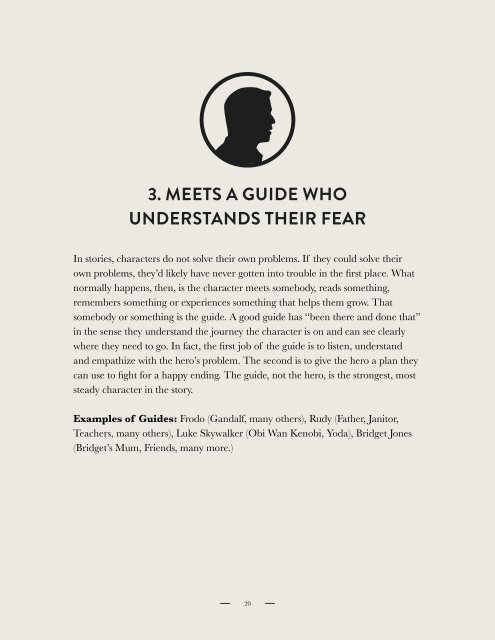You also want an ePaper? Increase the reach of your titles
YUMPU automatically turns print PDFs into web optimized ePapers that Google loves.
3. MEETS A GUIDE WHO<br />
UNDERSTANDS THEIR FEAR<br />
In s<strong>to</strong>ries, characters do not solve their own problems. If they could solve their<br />
own problems, they’d likely have never gotten in<strong>to</strong> trouble in the first place. What<br />
normally happens, then, is the character meets somebody, reads something,<br />
remembers something or experiences something that helps them grow. That<br />
somebody or something is the guide. A good guide has “been there and done that”<br />
in the sense they understand the journey the character is on and can see clearly<br />
where they need <strong>to</strong> go. In fact, the first job of the guide is <strong>to</strong> listen, understand<br />
and empathize with the hero’s problem. The second is <strong>to</strong> give the hero a plan they<br />
can use <strong>to</strong> fight for a happy ending. The guide, not the hero, is the strongest, most<br />
steady character in the s<strong>to</strong>ry.<br />
Examples of Guides: Frodo (Gandalf, many others), Rudy (Father, Jani<strong>to</strong>r,<br />
Teachers, many others), Luke Skywalker (Obi Wan Kenobi, Yoda), Bridget Jones<br />
(Bridget’s Mum, Friends, many more.)<br />
20



